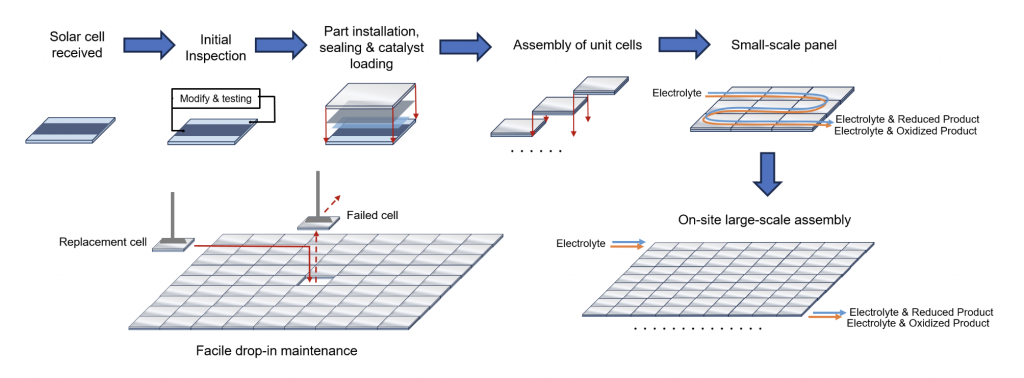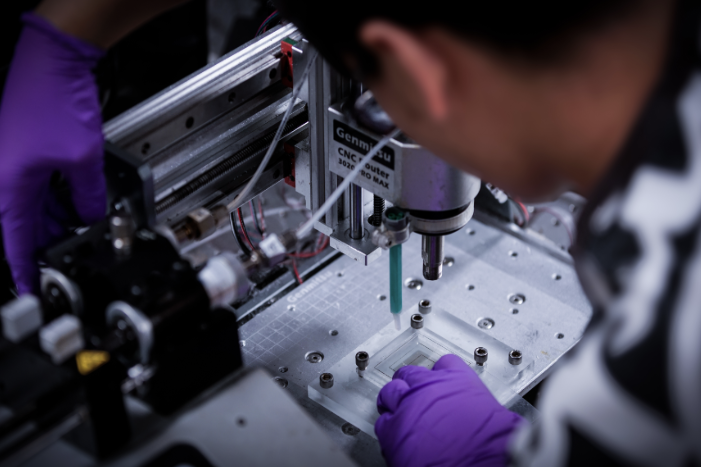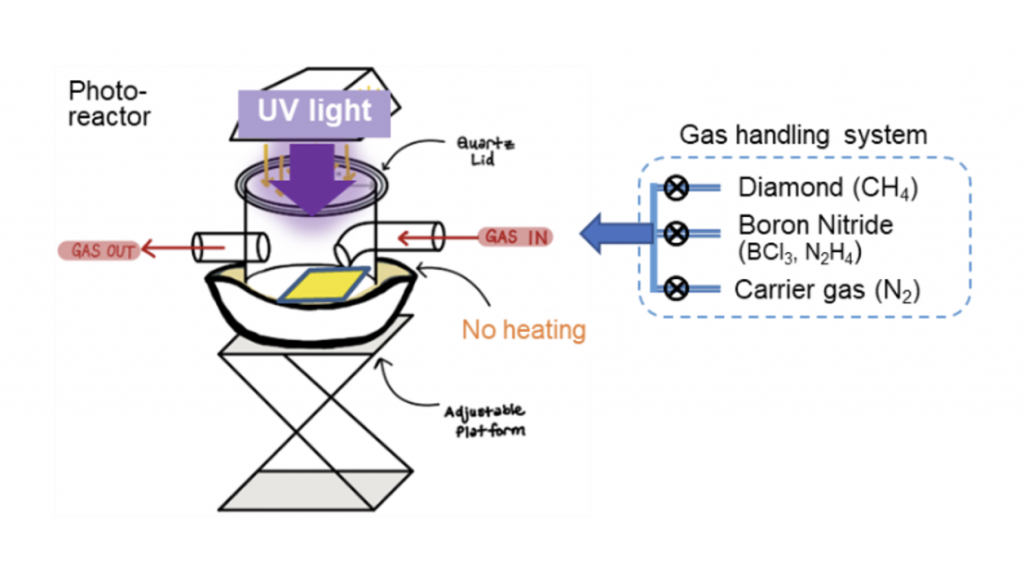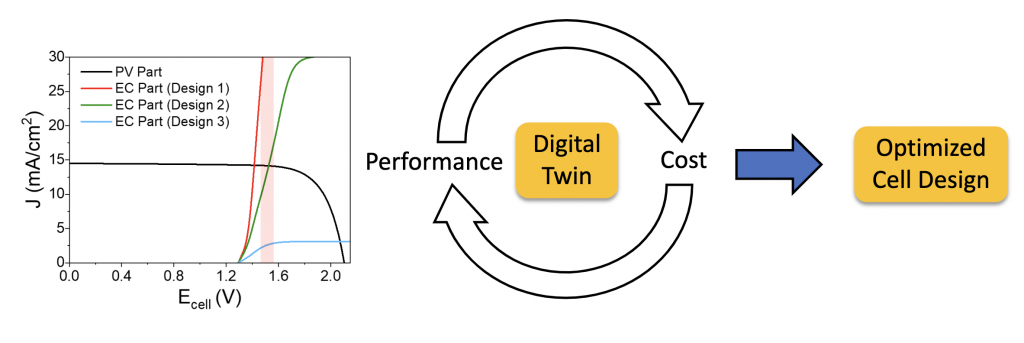Digitized Manufacturing for Large-scale PEC Device
Hu Lab Research Direction
Key Takeaway
Vision Statement

Our Work
We have leveraged modularized design, digital twin informed optimization, and streamlined manufacturing to produce high-quality, commercial-scale PEC devices.
Impact
We have lowered the cost of hydrogen production through PEC innovation to enable sustainable solar fuels & off-grid application at scale
Research Background
Initial Research Question
Our research extends beyond lab-scale PEC reactors, encompassing the crucial transition to commercial-scale applications. This ambitious scope positions our group at the forefront of the field, as we strive to bridge the gap between academic research and industrial implementation. By addressing the critical challenges of scaling up PEC technology, we are pioneering efforts to transform promising laboratory results into practical, large-scale solutions. Our work not only advances scientific understanding but also paves the way for real-world applications, pushing the boundaries of renewable energy research closer to industry adoption.
Our Research Direction
Our research focuses on addressing two primary challenges in PEC technology scaling up :
- Developing efficient methods for large-scale PEC reactor manufacturing and deployment
- Enhancing the market competitiveness of PEC product compared to the non-solar-driven counterparts.
To tackle these challenges comprehensively, we have structured our research into four key subcategories:
- Modularized PEC Device Design
- Digital Manufacturing
- Scale up Coating
- Digital twin in PEC scaling up
Our Research
Modularized PEC Device Design

Our PEC device integrates the solar cell into the electrochemical cell housing. Considering the stability issue of large-area solar cell, we innovatively make modularized PEC unit cells with plug-and-play feature. This facilitates large-scale deployment and customization of our PEC system, as well as enable drop-in maintenance, allowing for more flexible and efficient large-scale implementations and lower maintenance cost.
Digital Fabrication for Large Scale Manufacturing
With digital technologies like 3D printer, CNC machine, laser cutter, robotic arms, etc., we aim to digitize and streamline the PEC module component manufacturing processes, which features our production line with high efficiency, outstanding quality control and economical.

Scale Up Coating

Our team is developing an advanced, patent-pending coating technology that is suitable for large area, which is crucial for maintaining high performance in large-scale PEC device. We will use light to catalyze TiO2 deposition over 6-inch silicon wafers, supported under DOE Hydrogen Shot, to deliver 200 cm2 devices at 18% STH efficiency in 2026 and 1 m2 device arrays in 2027.
Digital Twin in PEC Scaling Up
The intersection of the photovoltaic (PV) part and the electrochemical (EC) part’s J-V curves determines the operating current. The electrochemical cell’s performance should be coordinated with that of the photovoltaic part; otherwise, it may lead to material waste or reduced efficiency. A digital twin, establishing a two-way feedback loop between experimental results and simulations, will optimize cell design to strike a balance between performance and fabrication cost, thereby achieving the best cost-effectiveness.

Conclusion
Design and manufacture efficient and stable PEC water-splitting devices using 6-inch size perovskite/silicon tandem cells and assemble a 7×7 device array producing H2 at 4 g/h
Advance towards $1/kg H2 production target with <$70/m2 projected cost at scale for perovskite/silicon tandem cells and reduced membrane active area usage to 20%
